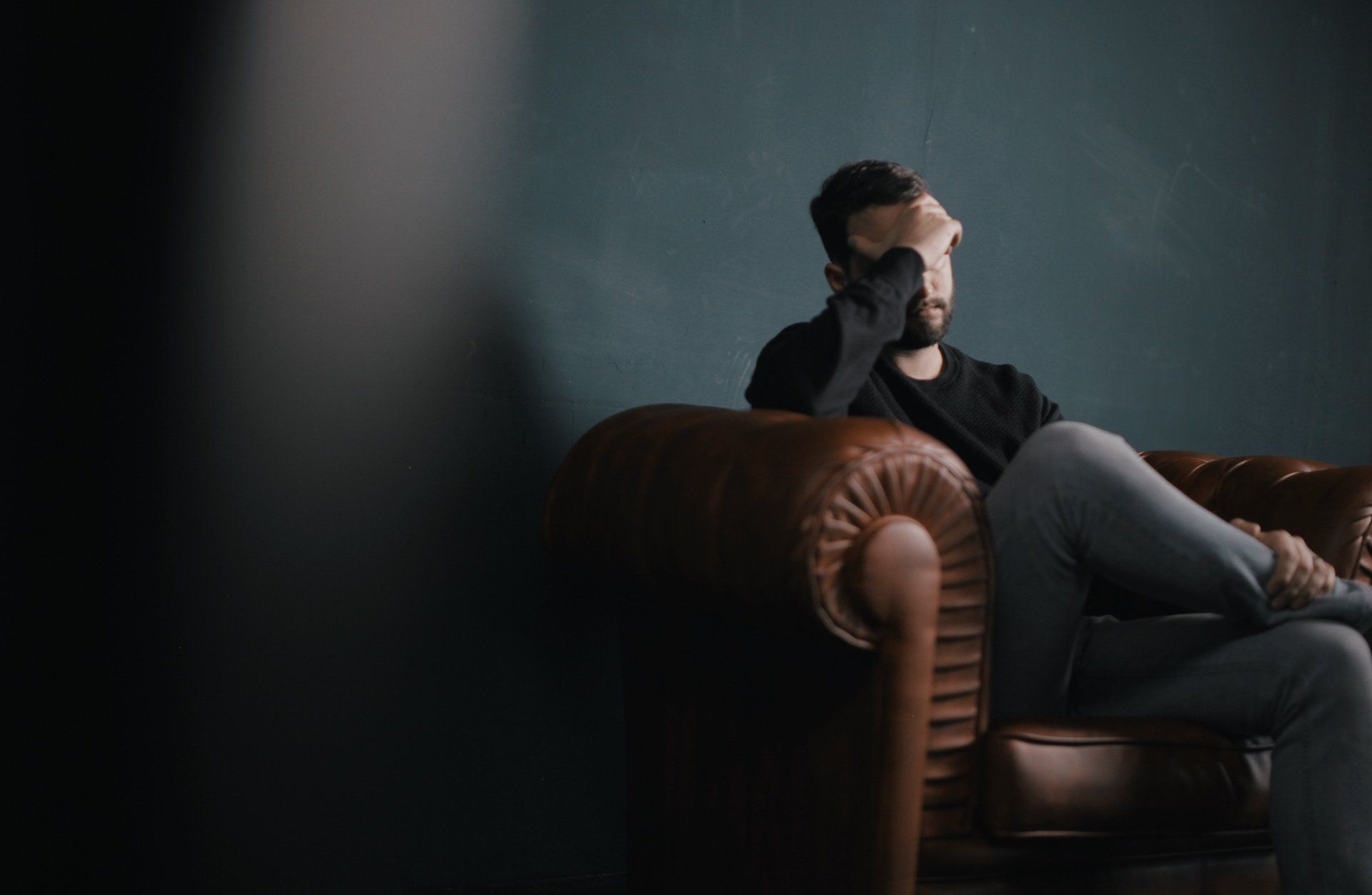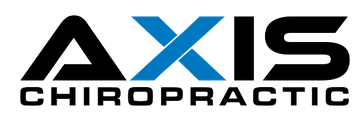Patient Center
Welcome to the patient center for AXIS / Todd Family Chiropractic!
NEW Patient:
We understand that arriving at a chiropractic office for the first time can be nerve racking. If you've never experienced chiropractic care before, you may not know what to expect when you come to our San Luis Obispo chiropractic office for the first time. Filling out paperwork, learning new faces, and getting to know your way around the office can be an overwhelming experience.
That's why at Todd Family Chiropractic our aim is to remove any unnecessary stress or tension and make you feel comfortable during your visit with our chiropractor.
In this area of the website, you will be able to take care of the items necessary for your chiropractic visit prior to arriving, in the comfort of your own home. If you have any questions at any time, please don't hesitate to contact our San Luis Obispo chiropractic office at 805-548-8633!
Online Forms:
Todd Family Chiropractic offers our patient forms online so they can be completed in the convenience of your own home or office, before you even arrive to our chiropractic office.
- If you do not already have AdobeReader® installed on your computer, Click Here to download.
- Download the necessary form(s), print it out and fill in the required information.
- Bring it with you to your appointment.
New Patient Health History Form - Required
This lets us know the history and current state of your health. What questions, concerns, goals, regarding wellness can we help you with? Let us know!
Laying the foundation for total health
In some ways, one could say that chiropractic care is a bit like building a house - certain things have to happen in a particular order in order for everything to stand strong and work together correctly. When building a house, if you tried to build your walls before you had a solid foundation, your walls would be weak and eventually may even collapse. If you tried to build your roof before the walls were ready, you would run into the same problem. These concepts apply to your body as well, and chiropractic care addresses many common reasons why people experience pain and other health issues. If something is not right with your body's foundation, than that needs to be addressed before true health can be achieved. With chiropractic care, your body has to go through a particular plan of care in order to repair itself correctly and fully. There are three general phases of chiropractic care . . .

What's Causing Your Back Pain? Nearly everyone has back pain from time to time. In fact, 60 to 70 percent of people living in industrialized countries have experienced low back pain, according to World Health Organization estimates. Back pain can occur for many reasons, including these common causes. Herniated Disc Flexible discs located between the vertebra in your spine help hold your spine together and act as shock absorbers when you move. A herniated disc occurs when the gel-like center of the disc protrudes through the tough, outer coating. The bulging disc can press against nerves in your spine, triggering back pain. Wear and tear due to aging is a common cause of herniated discs, but they can also occur as a result of an injury. Spinal Stenosis Wear and tear may also cause spinal stenosis, a condition that occurs when the spine narrows and presses on nerves. In addition to back pain, spinal stenosis can also cause numbness, tingling or weakness in your arm, leg, foot, or hand. Spondylosis Arthritis can affect any bone in your body, including those in your back. When arthritis occurs in the spine, it's called spondylosis.

The low back can withstand tremendous forces without injury. However, if the low back is out of adjustment or has weakened supporting muscles, something as simple as taking a bag of groceries can cause a low back injury. Eighty percent of people suffer from back pain at some point in their lives. Back pain is the second most common reason for visits to the doctor's office, outnumbered only by upper-respiratory infections. In fact, it is estimated that low back pain affects more than half of the adult population each year and more than 10 percent of all people experience frequent bouts of low back pain. The susceptibility of the low back to injury and pain is due to the fact that the low back, like the neck, is a very unstable part of the spine. Unlike the thoracic spine, which is supported and stabilized by the rib cage. This instability allows us to have a great deal of mobility to touch our toes, tie our shoes or pick something up from the ground, but at the cost of increased risk of injury. As long as it is healthy and functioning correctly, the low back can withstand tremendous forces without injury. Professional powerlifters can pick up several hundred pounds off the floor without injuring their low back. However, if the low back is out of adjustment or has weakened supporting muscles, something as simple as taking a bag of groceries out of the trunk of their car, picking something up off the floor, or even simply bending down to pet the cat can cause a low back injury. Until recently, researchers believed that back pain would heal on its own. We have learned, however, that this is not true. Recent studies showed that when back pain is not treated, it may go away temporarily, but will most likely return. It is important to take low back pain seriously and seek professional chiropractic care. This is especially true with pain that recurs over and over again. Contact our chiropractor . . . we can help! The Causes of Low Back Pain There are many different conditions that can result in low back pain, including: sprained ligaments, strained muscles, ruptured disks, trigger points and inflamed joints. While sports injuries or accidents can lead to injury and pain, sometimes even the simplest movements, like picking up a pencil from the floor, can have painful results. In addition, conditions such as arthritis, poor posture, obesity, psychological stress and even kidney stones, kidney infections, blood clots, or bone loss can lead to pain. Due to the fact that there are a whole lot of things that can cause low back pain, and some of those things can be quite serious if left untreated, it is important to seek professional help. Chiropractors are the experts at diagnosing the cause and determining the proper treatment for low back pain. Here are some of the most common causes I see: Subluxations Whenever there is a disruption in the normal movement or position of the vertebrae, the result is pain and inflammation. In the lumbar spine, these usually occur at the transition between the lower spine and the sacrum. Subluxations can lead to debilitating low back pain. Fortunately, subluxations are easily treatable and often times a significant reduction in pain is experienced almost immediately after treatment. Disc Herniations Contrary to popular belief, a herniated disc does not automatically mean that you are going to suffer from low back pain. In fact, one study found that almost half of all adults had at least one bulging or herniated disc, even though they did not suffer any back pain from it. On the other hand, herniated discs can be a source of intense and debilitating pain that frequently radiates to other areas of the body. Unfortunately, once a disc herniates, they rarely, if ever, completely heal. Further deterioration can often be avoided through regular chiropractic care, but a complete recovery is much less common. Sprains, Strains and Spasms This is commonly the source of low back pain among the weekend warriors. You know, the type who have very little physical activity during the week, but once the weekend arrives, they push themselves way too much. By the end of the weekend, they are lying flat on their back counting down the hours before they can get in to see their chiropractor. Overworking the muscles or ligaments of the low back can lead to small tears in the tissues, which then become painful, swollen, and tight. Stress Whenever you become stressed, your body responds by increasing your blood pressure and heart rate, flooding your body with stress hormones and tightening up your muscles. When you are stressed all the time, the chronic tension causes your muscles to become sore, weak and loaded with trigger points. If you are stressed out all of the time and you have low back pain, it is important to do some relaxation exercises, such as deep breathing, as well as to get regular exercise. Treating Low Back Pain With Chiropractic Chiropractic treatment for low back pain is usually pretty straightforward. Most commonly, it's simply a matter of adjusting the lower lumbar vertebrae and pelvis to re-establish normal motion and position of your bones and joints. Chiropractic for the low back has been repeatedly shown to be the most effective treatment for low back pain. In fact, major studies have shown that chiropractic care is more effective, cheaper and has better long-term outcomes than any other treatment. This makes sense because chiropractic care is the only method of treatment that serves to re-establish normal vertebral motion and position in the spine. All other treatments, such as muscle relaxants, pain killers, and bed rest, only serve to decrease the symptoms of the problem and do not correct the problem itself.

Headaches affect just about everyone at some point and they can present themselves in many different ways. Some people only experience pain in one part of their head or behind their eyes, some people experience a pounding sensation inside their whole head, and some people even experience nausea, while others do not. The pain itself may be dull or sharp and may last for anywhere from a few minutes to a few days. Fortunately, very few headaches have serious underlying causes, but those that do require urgent medical attention. Although headaches can be due to a wide variety of causes, such as drug reactions, temporomandibular joint dysfunction (TMJ), tightness in the neck muscles, low blood sugar, high blood pressure, stress and fatigue, the majority of recurrent headaches are of two types: tension headaches (also called cervicogenic headaches) and migraine headaches. There is a third, less common, type of headaches called a cluster headache that is a cousin to the migraine. Chiropractic Care for Headaches Numerous research studies have shown that chiropractic adjustments are very effective for treating tension headaches, especially headaches that originate in the neck. A report released in 2001 by researchers at the Duke University Evidence-Based Practice Center in Durham, NC, found that "spinal manipulation resulted in almost immediate improvement for those headaches that originate in the neck, and had significantly fewer side effects and longer-lasting relief of tension-type headache than commonly prescribed medications." These findings support an earlier study published in the Journal of Manipulative and Physiological Therapeutics that found spinal manipulative therapy to be very effective for treating tension headaches. This study also found that those who stopped chiropractic treatment after four weeks continued to experience a sustained benefit in contrast to those patients who received pain medication. Each individual's case is different and requires a thorough evaluation before a proper course of chiropractic care can be determined. However, in most cases of tension headaches, significant improvement is accomplished through manipulation of the upper two cervical vertebrae, coupled with adjustments to the junction between the cervical and thoracic spine. This is also helpful in most cases of migraine headaches, as long as food and lifestyle triggers are avoided as well. Headache Trigger Points Trigger point therapy for headaches tends to involve four muscles: the Splenius muscles, the Suboccipitals, the Sternocleidomastoid (SCM) and the Trapezius. The Splenius muscles are comprised of two individual muscles - the Splenius Capitis and the Splenius Cervicis. Both of these muscles run from the upper back to either the base of the skull (splenius capitis) or the upper cervical vertebrae (splenius cervicis). Trigger points in the Splenius muscles are a common cause of headache pain that travels through the head to the back of the eye, as well as to the top of the head. The Suboccipitals are actually a group of four small muscles that are responsible for maintaining the proper movement and positioning between the first cervical vertebra and the base of the skull. Trigger points in these muscles will cause pain that feels like it's inside the head, extending from the back of the head to the eye and forehead. Often times it will feel like the whole side of the head hurts, a pain pattern similar to that experienced with a migraine. The Sternocleidomastoid (SCM) muscle runs from the base of the skull, just behind the ear, down the side of the neck to attach to the top of the sternum (breastbone). Although most people are not aware of the SCM trigger points, their effects are widespread, including referred pain, balance problems and visual disturbances. Referred pain patterns tend to be deep eye pain, headaches over the eye and can even cause earaches. Another unusual characteristic of SCM trigger points is that they can cause dizziness, nausea and unbalance. The trapezius muscle is the very large, flat muscle in the upper and mid back. A common trigger point located in the very top of the Trapezius muscle refers pain to the temple and back of the head and is sometimes responsible for headache pain. This trigger point is capable of producing satellite trigger points in the muscles in the temple or jaw, which can lead to jaw or tooth pain. Avoid Headache Triggers Stress may be a trigger, but certain foods, odors, menstrual periods, and changes in weather are among many factors that may also trigger headache. Emotional factors such as depression, anxiety, frustration, letdown, and even pleasant excitement may be associated with developing a headache. Keeping a headache diary will help you determine whether factors such as food, change in weather, and/or mood have any relationship to your headache pattern. Repeated exposure to nitrite compounds can result in a dull, pounding headache that may be accompanied by a flushed face. Nitrite, which dilates blood vessels, is found in such products as heart medicine and dynamite, but is also used as a chemical to preserve meat. Hot dogs and other processed meats containing sodium nitrite can cause headaches. Eating foods prepared with monosodium glutamate (MSG) can result in headache. Soy sauce, meat tenderizer, and a variety of packaged foods contain this chemical which is touted as a flavor enhancer. Headache can also result from exposure to poisons, even common household varieties like insecticides, carbon tetrachloride, and lead. Children who ingest flakes of lead paint may develop headaches. So may anyone who has contact with lead batteries or lead-glazed pottery. Foods that are high in the amino acid tyramine should also be avoided, such as ripened cheeses (cheddar, brie), chocolate, as well as any food pickled or fermented foods. Contact us today!

Most neck and upper back pain is caused by a combination of factors, including injury, poor posture, chiropractic subluxations, stress, and in some instances, disc problems. Most people do not realize how much they move their neck during the day until they are unable to do so. The degree of flexibility of the neck, coupled with the fact that it has the least amount of muscular stabilization and it has to support and move your 14 - 16 pound head, means that the neck is very susceptible to injury. You can picture your neck and head much like a bowling ball being held on top of a stick by small, thin, elastic bands. It doesn't take much force to disrupt that delicate balance. The spinal cord runs through a space in the vertebrae to send nerve impulses to every part of the body. Between each pair of cervical vertebrae, the spinal cord sends off large bundles of nerves that run down the arms and to some degree, the upper back. This means that if your arm is hurting, it may actually be a problem in the neck! Symptoms in the arms can include numbness, tingling, cold, aching, and "pins and needles". These symptoms can be confused with carpal tunnel syndrome, a painful condition in the hands that is often found in people who work at computer keyboards or perform other repetitive motion tasks for extended periods. Problems in the neck can also contribute to headaches, muscle spasms in the shoulders and upper back, ringing in the ears, otitis media (inflammation in the middle ear, often mistaken for an ear infection in children), temporomandibular joint dysfunction (TMJ), restricted range of motion and chronic tightness in the neck and upper back. We associate the neck and upper back together, because most of the muscles that are associated with the neck either attach to, or are located in, the upper back. These muscles include the trapezius, the levator scapulae, the cervical paraspinal muscles and the scalenes, as well as others. The Causes of Neck and Upper Back Pain Most neck and upper back pain is caused by a combination of factors, including injury, poor posture, chiropractic subluxations, stress, and in some instances, disc problems. Injuries By far, the most common injury to the neck is a whiplash injury. Whiplash is caused by a sudden movement of the head, either backward, forward, or sideways, that results in the damage to the supporting muscles, ligaments and other connective tissues in the neck and upper back. Whether from a car accident, sports, or an accident at work, whiplash injuries need to be taken very seriously. Because symptoms of a whiplash injury can take weeks or months to manifest, it is easy to be fooled into thinking that you are not as injured as you really are. Too often people don't seek treatment following a car accident or sports injury because they don't feel hurt. Unfortunately, by the time more serious complications develop, some of the damage from the injury may have become permanent. Numerous studies have shown that years after whiplash victims settle their insurance claims, roughly half of them state that they still suffer with symptoms from their injuries. If you have been in a motor vehicle or any other kind of accident, don't assume that you escaped injury if you are not currently in pain. Get checked out by a good chiropractor. Forward head posture is very common for people who are stooped over their computers all day long. If not taken care of with chiropractic care, subluxations like this can worsen over time. Poor Posture One of the most common causes of neck pain, and sometimes headaches, is poor posture. It's easy to get into bad posture habits without even realizing it - even an activity as "innocent" as reading in bed can ultimately lead to pain, headaches, and more serious problems. The basic rule is simple: keep your neck in a "neutral" position whenever possible. Don't bend or hunch your neck forward for long periods. Also, try not to sit in one position for a long time. If you must sit for an extended period, make sure your posture is good: Keep your head in a neutral position, make sure your back is supported, keep your knees slightly lower than your hips, and rest your arms if possible. Subluxations Subluxations in the neck and upper back area are extremely common due to the high degree of stress associated with holding up your head, coupled with the high degree of instability in the cervical spine. Most subluxations tend to be centered around four areas: the top of the cervical spine where it meets the skull; in the middle of the cervical spine where the mechanical stress from the head is the greatest; in the transition where the cervical and thoracic areas of the spine meet; and in the middle of the thoracic spine where the mechanical stress from the weight of the upper body is greatest. Signs of subluxation include looking in the mirror and seeing your head tilted or one shoulder higher than the other. Often women will notice that their sleeve length is different or that a necklace is hanging off center. If someone looks at you from the side they may notice that your head sits forward from your shoulders. This is known as FHP - forward head posture - and is very common for people who are stooped over their computers all day long. Subluxations are a debt to the body. If they are not taken care of soon after they occur, then they can get much worse over time due to the accumulation of compounding interest. Stress When most people become stressed, they unconsciously contract their muscles. In particular, the muscles in their back. This 'muscle guarding' is a survival response designed to guard against injury. In today's world where we are not exposed to physical danger most of the time, muscle guarding still occurs whenever we become emotionally stressed. The areas most affected are the muscles of the neck, upper back and low back. For most of us, the particular muscle affected by stress is the trapezius muscle, where daily stress usually leads to chronic tightness and the development of trigger points. The two most effective ways you can reduce the physical effects of stress on your own are to increase your activity level - exercise - and by deep breathing exercises. When you decrease the physical effects of stress, you can substantially reduce the amount of tightness and pain in your upper back and neck. Disc Herniations The discs in your cervical spine can herniate or bulge and put pressure on the nerves that exit from the spine through that area. Although cervical discs do not herniate nearly as often as lumbar discs do, they occasionally can herniate, especially when the discs sustain damage from a whiplash injury. Contact us today!
